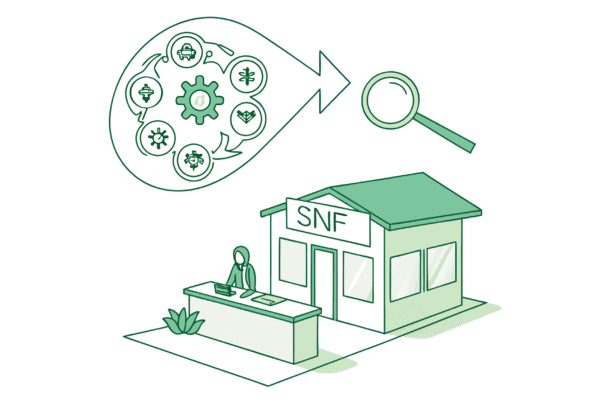Selling your Applied Behavior Analysis (ABA) practice is a major decision. For owners of school and community-based ABA practices in Alaska, the current market presents a significant opportunity defined by high demand and unique challenges. Knowing how to navigate this landscape is the key to a successful transition. This guide provides a clear overview of the market, the process, and the key factors that will influence the value of your practice.
Market Overview
The market for ABA services in Alaska is compelling. Unlike more saturated markets, Alaska features a landscape of high demand with a limited number of established providers. This creates a favorable environment for practice owners considering a sale. Buyers are actively looking for well-run practices in growth regions, and Alaska fits that description perfectly.
The financial health of the market is also strong. This environment is driven by a few key factors:
- High Demand for Services: There is a clear and growing need for specialized ABA services across the state, both in schools and in community settings.
- Limited Local Competition: With fewer providers, your practice holds a more significant position in the market, which is attractive to buyers seeking a strategic foothold.
- Strong Financial Indicators: High earning potential for Board Certified Behavior Analysts (BCBAs) in the state, with some salaries reported up to $113,340 annually, points to a profitable sector. This indicates that the revenue and margin potential for a well-managed practice is high.
Key Considerations
While the market is attractive, selling an ABA practice in Alaska requires navigating a specific and complex environment. A buyer will look closely at your operational and regulatory standing. Preparing for this scrutiny is a critical part of the process.
Regulatory Compliance
Your practice must be in full compliance with Alaska’s state-level regulations. This includes licensing for behavior analysts through the Division of Corporations, Business and Professional Licensing, which has been in place since 2014. A clean compliance record is not just a necessity; it’s a value driver.
Dual Service Models
If your practice serves both schools and the broader community, you operate under two different sets of rules. Buyers will assess your adherence to both Alaska’s special education regulations for school-based services and the state’s behavioral health services regulations (like 7 AAC 135) for community programs. Demonstrating expertise in both areas is a significant strength.
Payer and Staffing Nuances
Your relationships with payers, including Alaska’s Medicaid program, are a core component of your practice’s value. In addition, the quality and credentials of your team of BCBAs and Registered Behavior Technicians (RBTs) are a primary asset. A stable, qualified team reduces the perceived risk for a new owner.
Market Activity
You may not see many ABA practices listed for sale on public websites in Alaska. This isn’t a sign of a slow market. It’s a sign of a sophisticated one. The most valuable transactions in niche specialties like ABA often happen privately, managed through confidential, targeted outreach to qualified buyers.
National healthcare groups and private equity firms are looking to partner with strong independent practices in high-growth areas. They are drawn to Alaska’s favorable supply-and-demand dynamics. These buyers have a clear idea of what they want in a practice partner.
| Buyer Priority | Why It Matters in Alaska |
|---|---|
| Demonstrated Demand | Your consistent client base and referral sources prove the need for your services in your community. |
| Clean Compliance | A perfect record with state licensing and regulations makes for a smooth and low-risk transition. |
| Growth Potential | The limited number of providers means a new owner has a clear path to expand services. |
Sale Process
Many owners think they should only start planning a sale when they are ready to exit. The reality is that the highest valuations go to those who prepare well in advance. The sale process is a journey with four distinct phases.
-
Strategic Preparation
Before you ever list your practice, we help you prepare. This involves organizing your financials, strengthening your operational systems, and crafting the story of your practice’s unique value. Buyers do not pay for potential. They pay for proven performance. -
Valuation and Marketing
A comprehensive valuation establishes a credible asking price. We then confidentially approach a curated list of qualified buyers from our proprietary database, creating a competitive environment designed to maximize offers. -
Navigating Due Diligence
This is the most intensive phase, where the buyer inspects every aspect of your business. It is also where many deals encounter problems if the practice is not prepared. We help you organize your data and anticipate requests, ensuring a smooth and transparent process. -
Negotiation and Closing
The final step involves more than just the price. We help structure the deal to optimize your after-tax proceeds and align the terms with your personal and professional goals for the future.
Valuation
“What is my practice worth?” is the first question every owner asks. The answer is more complex than a simple rule of thumb. True valuation is a blend of financial analysis and strategic positioning.
Beyond the Numbers
The starting point for any serious valuation is Adjusted EBITDA (Earnings Before Interest, Taxes, Depreciation, and Amortization). We analyze your financial statements to normalize for any owner-specific or one-time expenses. This process often reveals a higher level of profitability than you might see on your standard reports, increasing your practice’s baseline value. Most practices we see are undervalued until this work is done.
The Art of the Multiple
Your Adjusted EBITDA is then multiplied by a number that reflects your practice’s quality and risk profile. Factors that increase this multiple include having a strong team of associate providers, a diverse payer mix, and a clear story for future growth. Multi-provider practices with strong systems consistently achieve higher multiples than those reliant on a single owner.
Post-Sale Considerations
A successful transaction goes beyond the closing date. It secures your financial future, protects your team, and preserves the legacy you have built in your community. Planning for the transition is as important as planning for the sale itself.
Thinking about these elements early in the process allows us to find a buyer whose vision aligns with yours. The structure of the deal is flexible and can be designed to meet your specific goals. Important post-sale points include:
- Your Future Role: Selling does not have to mean leaving. Many owners choose to stay on in a clinical role for a period of time, shed administrative burdens, and focus on patient care.
- Protecting Your Team: We identify buyers who recognize that your staff is your greatest asset and have a history of retaining and investing in their teams.
- Deal Structure and Your Legacy: A sale can be structured in many ways. Some owners take a portion of their proceeds as equity in the new, larger company. This “second bite at the apple” allows you to benefit from the continued growth you helped create. It is a powerful way to secure your legacy and financial future.
Frequently Asked Questions
What makes Alaska a unique market for selling a school and community-based ABA practice?
Alaska’s market for ABA services is characterized by high demand and limited local competition, creating a favorable environment for practice sales. Buyers seek well-managed practices in this growth region due to strong financial indicators and a unique supply-and-demand dynamic.
What regulatory compliance must be met when selling an ABA practice in Alaska?
The practice must comply fully with Alaska’s state-level regulations, including licensing for behavior analysts through the Division of Corporations, Business and Professional Licensing. Additionally, practices serving both schools and community must adhere to special education regulations for schools and behavioral health services regulations like 7 AAC 135 for community programs.
How do payer and staffing considerations impact the value of an ABA practice in Alaska?
Strong relationships with payers, including Medicaid, are crucial to the practice’s value. Additionally, having a stable, qualified team of BCBAs and Registered Behavior Technicians (RBTs) reduces risk for buyers and enhances the practice’s appeal and valuation.
What are the stages involved in selling a school and community-based ABA practice in Alaska?
The sale process involves four phases: Strategic Preparation (organizing finances and operations), Valuation and Marketing (setting the price and approaching buyers), Navigating Due Diligence (handling buyer inspections), and Negotiation and Closing (finalizing the deal and optimizing terms). Preparing well in advance improves valuation and sale success.
How is the valuation of an ABA practice in Alaska determined?
Valuation starts with Adjusted EBITDA, which normalizes financials to reflect true profitability. This figure is multiplied by a factor reflecting the practice’s quality, risk, team strength, payer diversity, and growth potential. Multi-provider practices with strong systems achieve higher multiples, making valuation a blend of financial analysis and strategic positioning.



